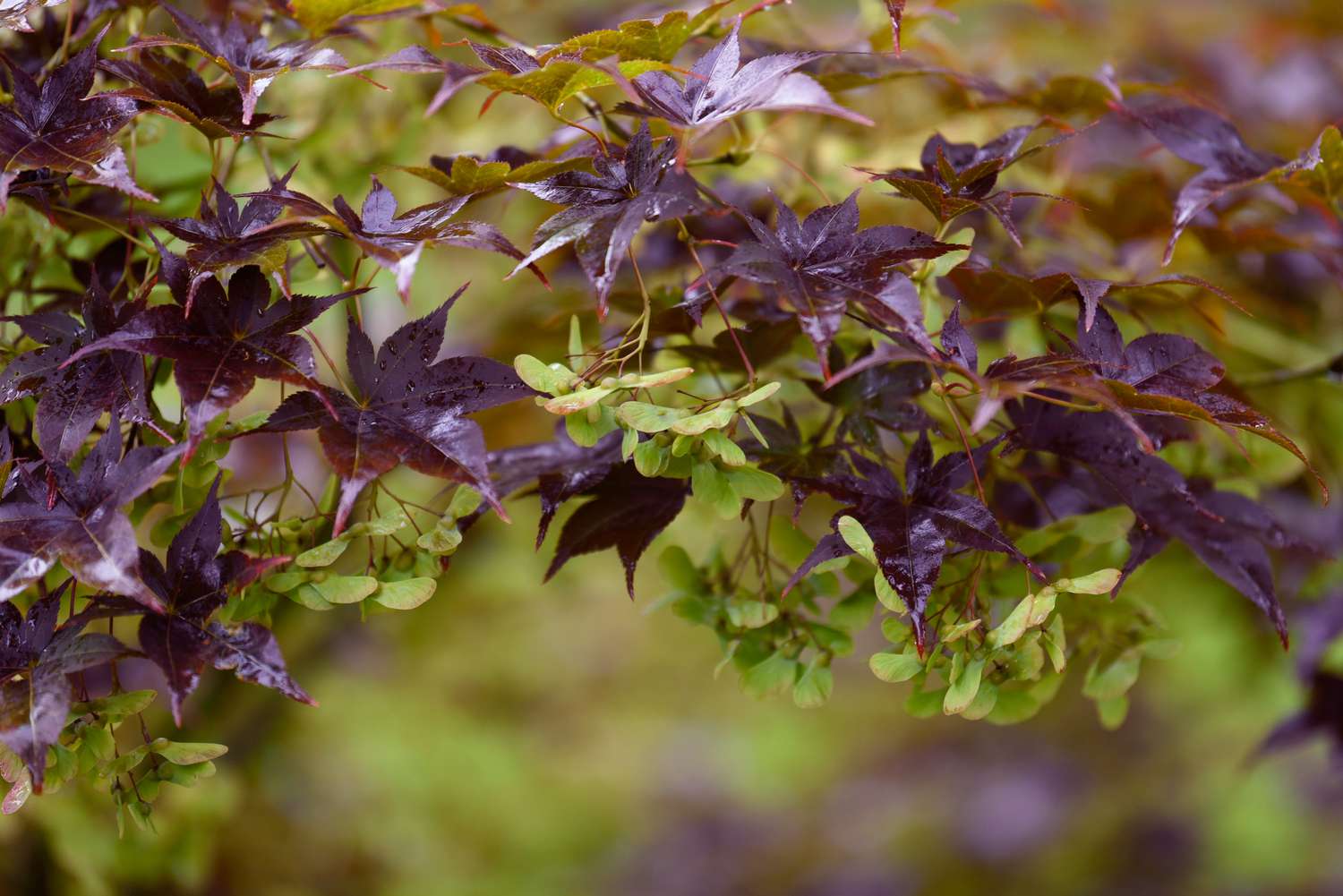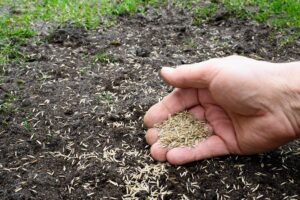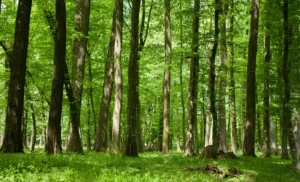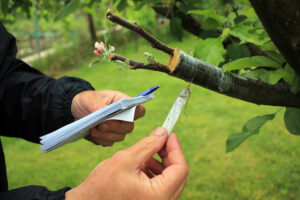Helicopter Seeds: Nature’s Spinning Marvels
Have you ever noticed small, spinning seeds falling gracefully from trees like tiny helicopters? These “helicopter seeds” or “whirly seeds” are one of nature’s most fascinating wonders. They capture the imagination with their twirling descent, and they play an essential role in tree reproduction. In this article, we’ll explore the trees that produce these seeds, identify the specific types of helicopter seeds, understand their purpose, and examine the environments in which they grow. Additionally, we will dive into how they work, why they spin, and what makes them such an effective natural design.
What Are Helicopter Seeds?
Helicopter seeds, also known as samara seeds, are a type of winged fruit produced by various trees. Their unique design allows them to spin as they fall to the ground, which helps disperse the seeds over a wider area. This spinning motion slows their descent, giving the wind more time to carry them farther away from the parent tree. This natural seed dispersal mechanism ensures that the seedlings don’t compete with the parent tree for resources like sunlight, water, and nutrients.
Which Trees Have Helicopter Seeds?
Several tree species produce helicopter seeds, but the most common are the maple (Acer species), ash (Fraxinus species), and elm (Ulmus species). These trees are widely distributed across the Northern Hemisphere, particularly in North America and Europe.
- Maple Trees (Acer spp.): Maple trees are the most famous producers of helicopter seeds. Species like Acer saccharum (sugar maple), Acer rubrum (red maple), and Acer platanoides (Norway maple) produce winged samaras that resemble tiny helicopters. In spring and early summer, these seeds detach from the branches and spin to the ground in a graceful, spiraling descent.
- Ash Trees (Fraxinus spp.): Another common source of helicopter seeds, ash trees, produce samaras that are single-winged. While not as dramatic in appearance as maple seeds, the ash’s samaras still utilize the same aerodynamic principles to travel away from the parent tree.
- Elm Trees (Ulmus spp.): Elm trees also produce seeds that spin as they fall. Unlike maples, which have pairs of winged seeds, elm samaras are encased in a papery, wing-like structure. Elms produce their seeds in the spring, often just after flowering.
- Sycamore Trees (Acer pseudoplatanus): These large trees, native to Europe and widely found in North America, also produce samaras that spin as they fall. Sycamore seeds are typically released in late summer and fall.
Identifying Helicopter Tree Seeds
Identifying helicopter tree seeds can be a fun activity, especially for nature lovers and students. Here’s how you can recognize seeds from common trees that produce helicopter-like seeds:
- Maple Seeds: The samaras of maple trees typically come in pairs. Each seed has two wings that meet at a slight angle, giving it a V-shape. The wings are papery and wide, which makes the seeds easy to spot as they spin in the wind.
- Ash Seeds: Unlike maple seeds, ash tree samaras are single-winged and elongated. The seeds are attached to the end of the wing, making the shape more linear. These seeds also twirl, though with less dramatic motion than maple seeds.
- Elm Seeds: Elm seeds are small, flat, and encased in a round, papery wing. When mature, these seeds break away from the tree and spin in the wind. Elms usually produce their helicopter seeds in clusters, which can make them easier to identify.
- Sycamore Seeds: The seeds of sycamore trees are larger, and their helicopter seeds have a somewhat thicker wing. These seeds are typically a bit heavier than those of maple or ash trees, and their spinning motion is more muted.
How Do Helicopter Seeds Work?
The helicopter seeds’ distinctive spinning action is due to the unique shape of their wings. This motion is not just for show—it’s a brilliant adaptation that helps the seeds travel farther from the tree, increasing the chances of germination in an area with fewer competing plants.
The spinning motion of helicopter seeds is a result of aerodynamic drag. When a seed falls, the wing creates lift, which slows its descent and causes it to spin. This spinning motion increases the amount of time the seed spends in the air, giving wind currents more time to move the seed horizontally. The farther the seed travels from the parent tree, the less likely it will compete for resources like water and light.
Why Do Helicopter Seeds Spin?
Helicopter seeds spin because it allows for more efficient seed dispersal. The process of dispersing seeds is essential for trees to propagate and avoid overcrowding. If seeds fall directly beneath the tree, they have a much lower chance of survival. By spinning and using the wind to travel, the seeds can settle in locations with more favorable conditions for growth.
The spinning action is caused by an uneven distribution of mass in the seed. The center of mass is located near the seed itself, while the wing creates lift as it spins. This combination of lift and mass imbalance causes the seed to rotate as it descends.
Seeds That Look Like Helicopters: An Evolutionary Masterpiece
The winged samaras of helicopter seeds are an excellent example of evolution at work. Over millions of years, trees that produced seeds capable of traveling farther survived and reproduced more successfully. This led to the development of seeds with wings, which can take advantage of even slight breezes to spread across a wide area.
Helicopter seeds, in their various forms, have evolved to fit the needs of the trees that produce them. For example:
- Maple trees produce large, V-shaped samaras that spin rapidly, helping them travel far and wide.
- Ash trees produce slimmer, more streamlined seeds that also utilize the wind for dispersal.
- Elm seeds are lighter and rely on their papery wings to spin and glide gently away from the tree.
These different designs all serve the same purpose: to move seeds away from the parent tree to reduce competition and increase the chances of survival.
Helicopter Seeds Falling from Trees: When and Why?
Helicopter seeds typically fall in late spring or early summer, depending on the tree species. For example, maple seeds usually fall in May or June, while ash seeds may fall slightly later. Some trees, such as the sycamore, may release their seeds in late summer or early fall.
The timing of seed release is critical for ensuring the seeds have the best chance of taking root. In most cases, trees release their seeds just after flowering, ensuring the seeds fall during the warm, wet months of spring and summer when conditions are ideal for germination.
Why Do Helicopter Seeds Fall in the Spring?
Spring is the optimal time for seed dispersal because of the favorable growing conditions. The soil is moist, the temperature is warm, and there is plenty of sunlight. This combination of factors increases the chances that the seeds will take root and grow into saplings.
Additionally, releasing seeds in the spring ensures that they have a full growing season ahead of them, giving the seedlings time to establish strong roots before the winter months.
Where Do Helicopter Seeds Grow?
Helicopter seeds grow in many regions, particularly in temperate forests across the Northern Hemisphere. The most common environments for trees that produce helicopter seeds include:
- Deciduous Forests: Maple, ash, and elm trees are all common in deciduous forests, which are found in regions with distinct seasons, including much of North America and Europe.
- Urban Areas: Many of these trees have been planted in cities and suburban areas for their beauty and shade. For example, maple trees are a popular choice for urban landscapes due to their stunning fall foliage and resilience.
- Parks and Gardens: Helicopter seed trees like maples and ashes are often found in parks, botanical gardens, and other cultivated spaces. Their beautiful foliage and ease of maintenance make them a favorite among landscapers.
Seeds That Spin When Falling: Nature’s Design for Dispersal
Seeds that spin when falling are a marvel of natural engineering. The spinning motion helps the seeds travel farther from the parent tree, increasing the likelihood of finding a suitable place to germinate.
The mechanism behind this spinning is similar to the principle behind helicopter blades or a maple leaf in free fall. The key is the seed’s wing, which generates lift as it falls. This lift slows the descent and allows the seed to drift on air currents, potentially traveling hundreds of feet from the tree.
Conclusion: Appreciating Nature’s Helicopter Seeds
The next time you see helicopter seeds falling from a tree, take a moment to appreciate the complex design that has evolved over millennia to ensure the survival of these magnificent trees. Whether you’re watching maple seeds spinning through the air or ash seeds fluttering to the ground, remember that you’re witnessing one of nature’s most efficient—and beautiful—forms of seed dispersal.






